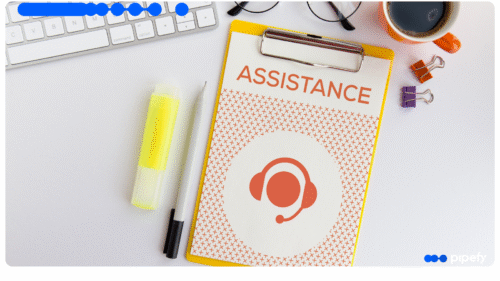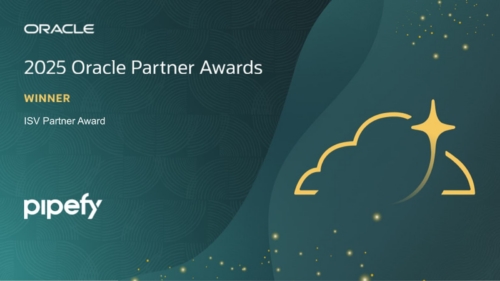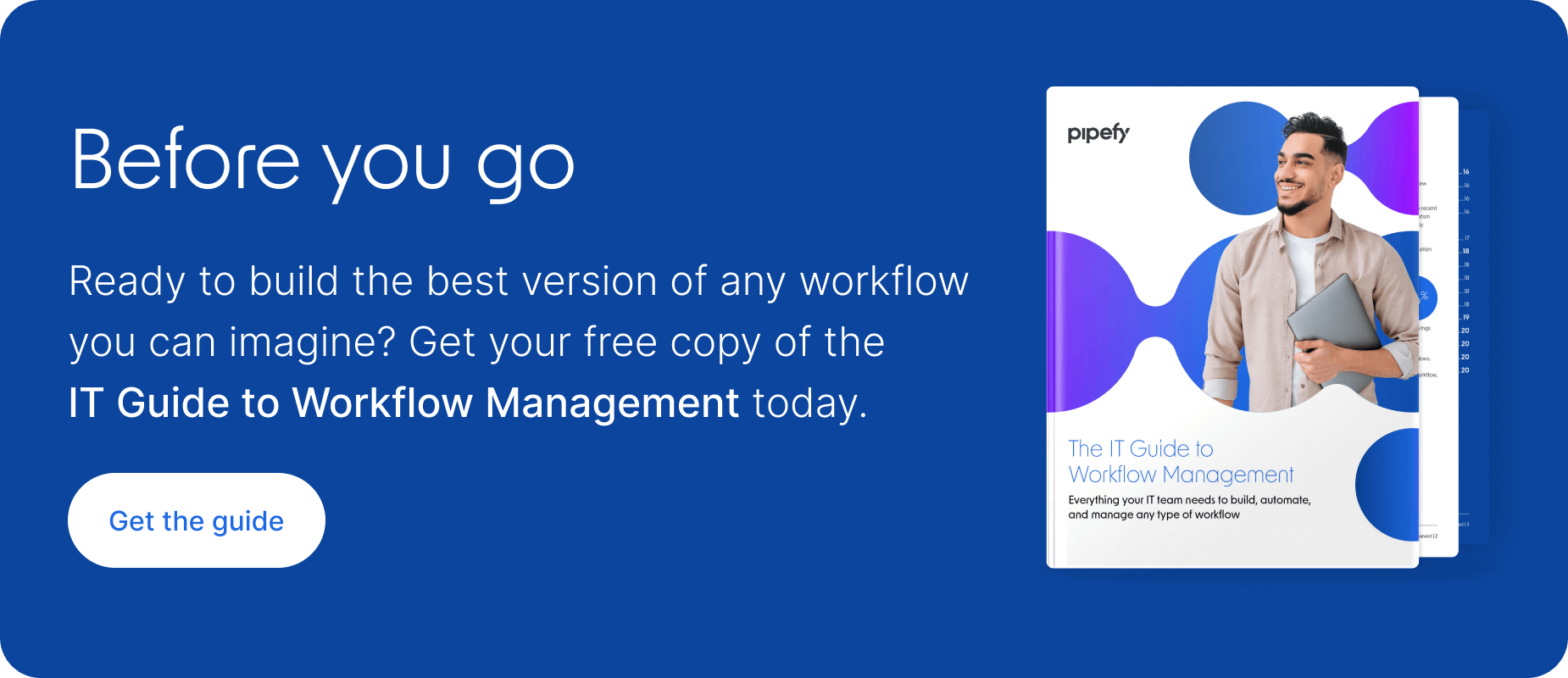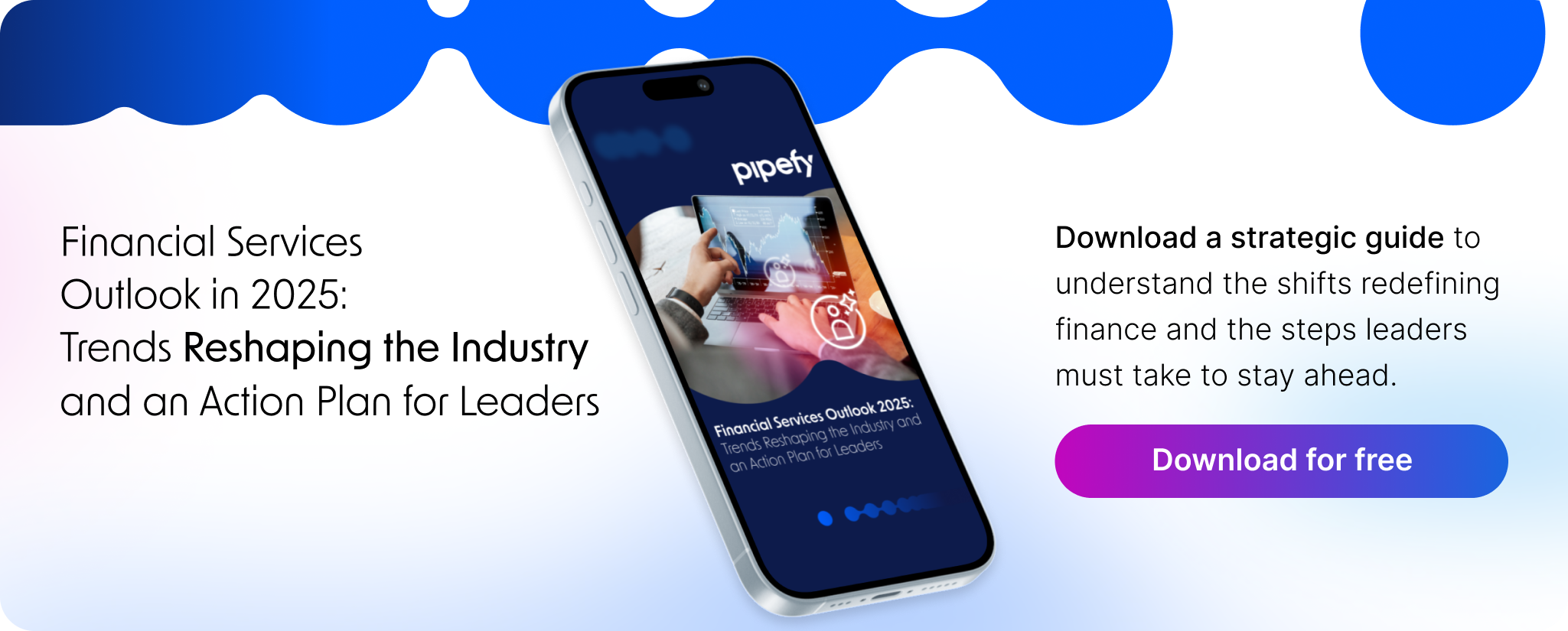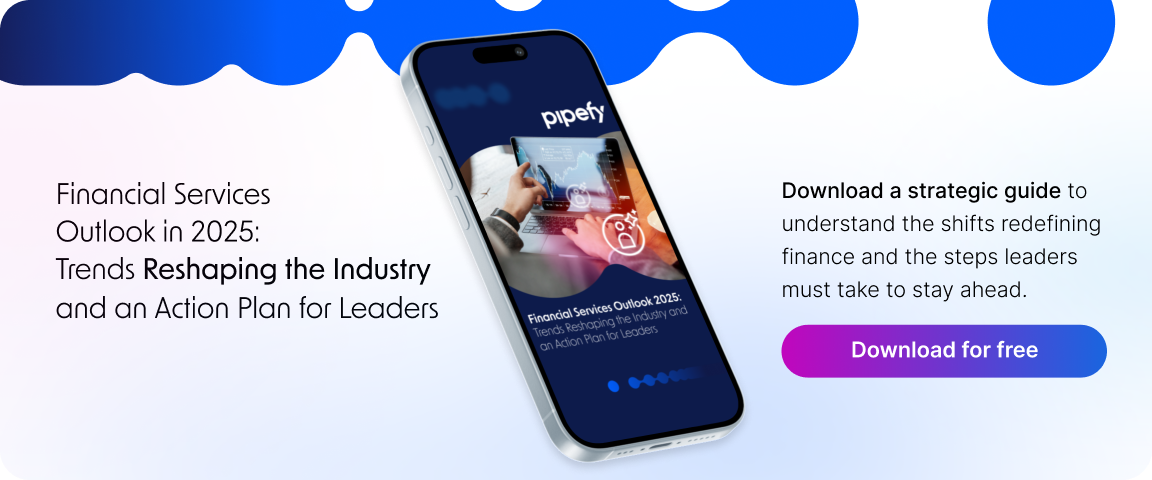ARTICLE SUMMARY
The Pipefy AI Assistant transforms business operations by turning conversations into automated actions. It integrates with platforms like Slack and Teams to streamline workflows and reduce manual work. Powered by generative AI, it improves efficiency, governance, and employee experience across all departments.
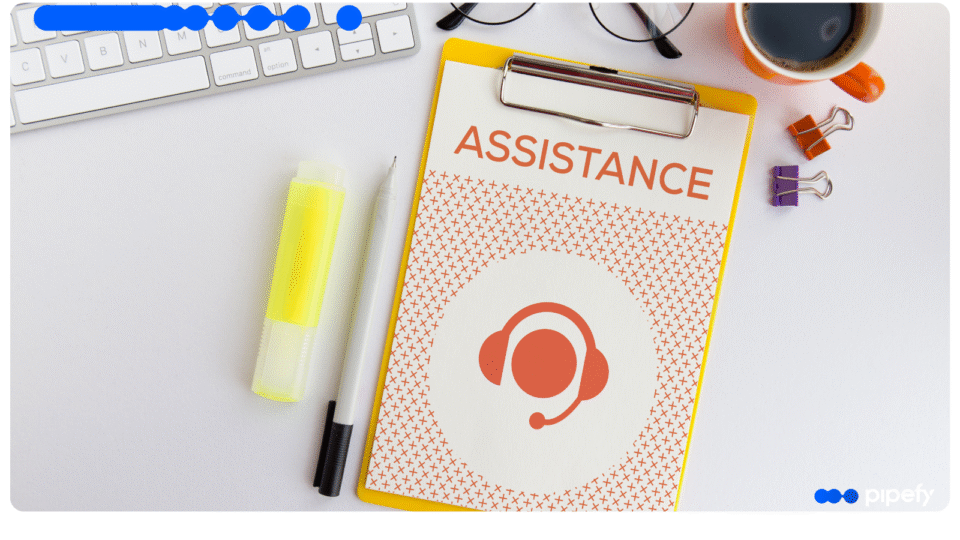
Intelligent automation is redefining how companies operate. With the evolution of virtual assistants, organizations of all sizes are optimizing workflows, eliminating repetitive tasks, and delivering faster, smoother experiences for both employees and customers.
In this context, the Pipefy AI Assistant emerges as a complete, innovative solution that turns conversations into actions—naturally, without complex setup or dependency on technical teams.
What is the Pipefy AI Assistant?
The Pipefy AI Assistant is a corporate virtual assistant built to operate within the Pipefy ecosystem — and it also integrates with tools like Slack, Microsoft Teams, and internal portals. It provides 24/7 support to answer questions, create requests, and track process statuses in real time.
Unlike traditional chatbots, the AI Assistant uses generative AI and internal context, learning from company policies, forms, databases, and documents. This allows it to understand the context of each request, respond accurately, and execute tasks directly within the workflow.
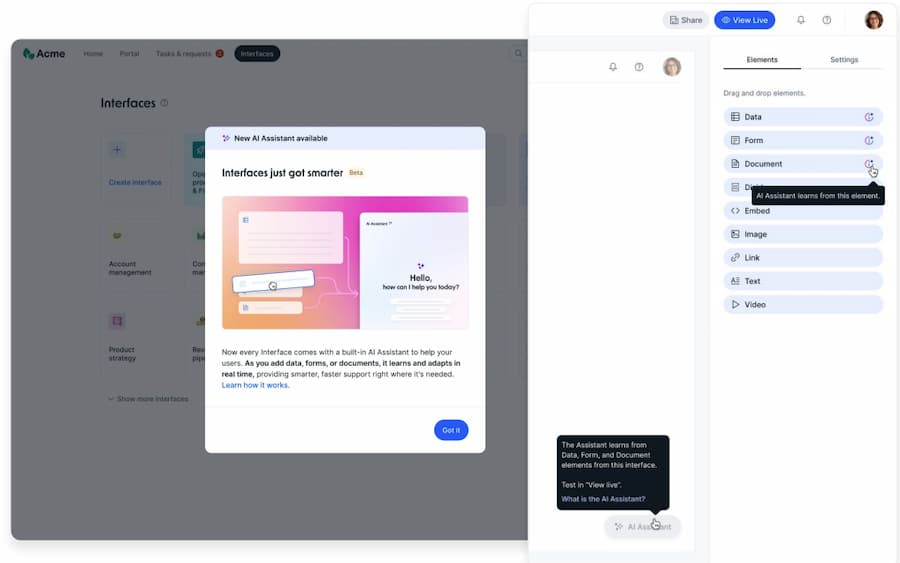
How the Pipefy AI Assistant works
The Pipefy AI Assistant operates through three core pillars: natural conversation, automated execution, and multichannel integration.
- Smart conversation: The assistant understands natural language questions — such as “How do I request a reimbursement?” or “What’s our vacation policy?” — and responds based on internal data and documents.
- Instant action: Beyond answering, it can create cards, open processes, attach documents, and track request statuses within Pipefy — no need for users to navigate the platform.
- Full integration: It works seamlessly within Pipefy, Slack, Teams, or custom portals, centralizing communication and eliminating channel fragmentation.
The result is a frictionless experience: employees simply talk to the assistant, and the process happens automatically.
Key features and capabilities
The Pipefy AI Assistant was designed to simplify team operations and boost productivity by applying AI to business processes. Its main features include:
- 24/7 availability: Always on, ready to answer questions and perform tasks.
- Automatic creation of virtual assistants: Pipefy interfaces and portals automatically generate contextualized assistants — no manual setup required.
- Integration with custom AI models (BYOK/LLM): Companies can connect their own language models (like GPT, Claude, or Gemini) and tailor the assistant’s behavior.
- Easy creation: With the new AI Assistant Builder, anyone can create an assistant in just a few clicks — no technical skills needed.
- Public assistants and WhatsApp integration (coming soon): Enabling external interactions with suppliers and customers.
These capabilities make Pipefy a true hub for enterprise virtual assistants, combining automation, intelligence, and personalization in one platform.
Challenges the Pipefy AI Assistant solves
The Pipefy AI Assistant was built to tackle common challenges faced by businesses dealing with high volumes of requests and human communication bottlenecks:
- Fragmented communication across email, Slack, portals, and WhatsApp
- Service delays and repetitive questions
- Lack of visibility into request statuses
- Slow, error-prone manual processes
- Low productivity in administrative teams
By centralizing communication and automating execution, the AI Assistant transforms conversations into action — delivering fast responses and automatic task execution, backed by Pipefy’s reliability and governance.
Ideal use cases
The Pipefy AI Assistant is suited for multiple business areas, especially those with high request volumes, frequent form submissions, and repetitive interactions. Common use cases include:
- Human Resources: vacation requests, onboarding, benefits, and policy FAQs
- Finance: reimbursements, salary advances, payment statuses, and receipt generation
- Procurement: purchase requests, supplier follow-ups, and quotations
- Legal: contract review and classification, clause lookups, and legal opinions
- Customer Service: automated responses and request tracking without overloading support teams
With this flexibility, the Pipefy AI Assistant adapts to both internal operations and external service contexts, ensuring scalability and consistency.
Business benefits and impact
Implementing virtual assistants within Pipefy generates direct, measurable results. Key benefits include:
- Reduced manual work and rework: The assistant can eliminate up to 80% of repetitive tasks.
- Operational agility: Requests are created and resolved in seconds, without switching between tools.
- Improved employee experience: Fast responses and seamless interactions drive higher satisfaction.
- Governance and traceability: Logs and audit trails show what the assistant did and how it made decisions.
- Scalability: New assistants can be generated automatically as teams expand or new interfaces are added.
In short, the Pipefy AI Assistant enhances operational efficiency, strengthens governance, and maximizes the strategic use of AI across the business.
Bring the power of virtual assistants to your business
The Pipefy AI Assistant represents the next generation of corporate virtual assistants — capable of thinking, deciding, and acting seamlessly within your business processes.
With it, you’ll reduce costs, boost productivity, and deliver a smoother experience for employees and customers alike.
Click the button below to try the Pipefy AI Assistant now and discover how it can revolutionize your daily operations.




